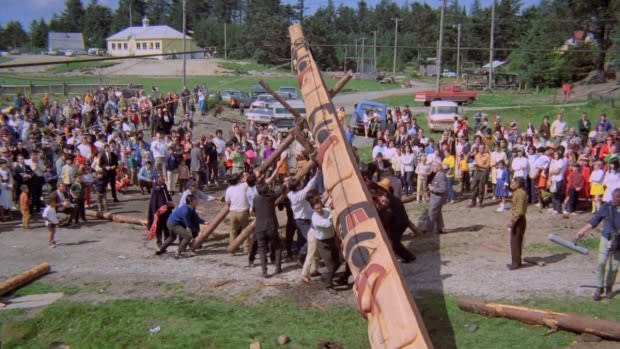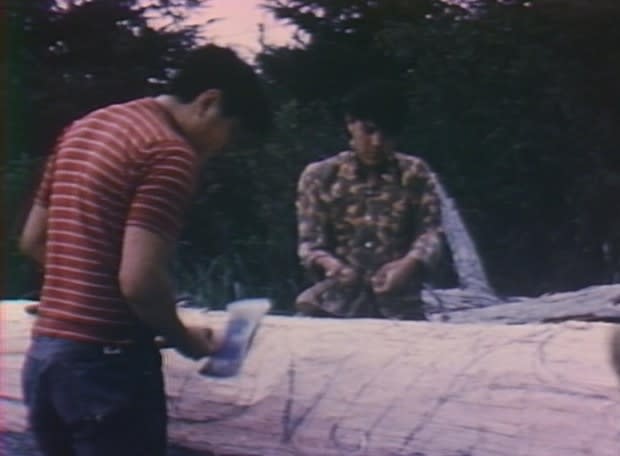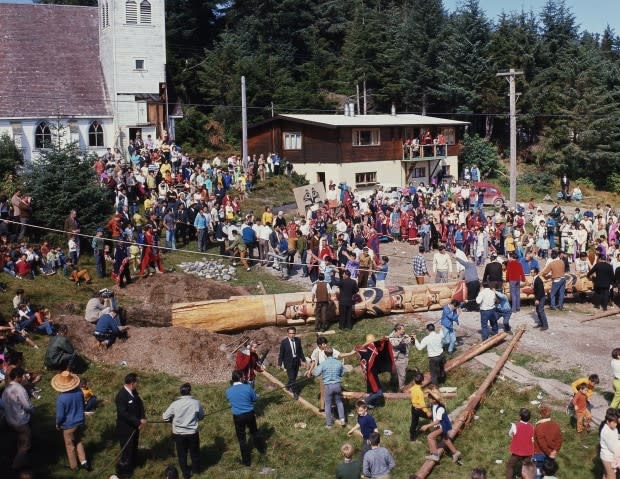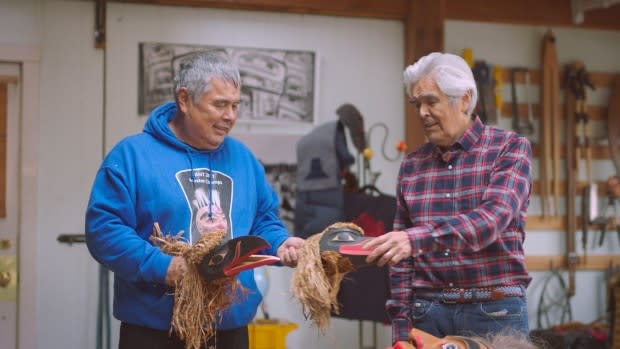Totem pole raising 50 years ago sparked 'reawakening,' Haida artist says
For Haida artist Robert Davidson, the idea of carving a totem pole was his grand, loving gesture to his grandparents' generation to allow them to celebrate in the old ways they knew one more time.
Except, he says, the then-22-year-old artist didn't know exactly what he was doing.
It was 1969 and no one had raised a pole for almost a century. Many of the giant cedar poles that were common across Haida Gwaii had been purposely felled after Christian missionaries deemed them sinful pagan idols, or by assimilationist government policies which allowed collectors, ethnologists and other officials to remove poles under the guise of preservation and study.
Davidson, who went on to become an internationally renowned visual artist, carver and jeweller, had little idea his project would spark a community revival.
Since that original totem raising, there have been many other totem poles carved and raised by the Haida, and other Indigenous communities across the northwest coast.
A family affair
"I wasn't really exposed to cultural events, cultural singing, dancing, because we were muted," said Davidson, 72, recalling the events of 50 years ago. "The inspiration came from my relationship with my elders."
Once Davidson made the commitment to carve and raise the pole, it became a family affair.
His father walked in the forest on Haida Gwaii for two weeks looking for a suitable log. His grandparents hosted elders at their house in the village of Masset to talk about all the right protocols around carving the pole.
"They had several meetings, and it was all in Haida. I don't speak Haida so I [would] have to sit with my uncle who translated for me," he said.

And it was alongside his brother Reg, who was 14 at the time, that Davidson spent three-and-half months, six days a week, carving the pole.
"[Reg had] never carved before, but he was there with me throughout the whole project," Davidson said.
The two brothers carved the pole near their parents' house in Masset. When it came to deciding where the pole would sit, the community settled on a space in front of a church.

"There was no real neutral ground we could think of, so that became the place for the pole to be raised right," he said.
Davidson said more than 1,000 people came from from out of town, from Masset, Skidegate and even Hydaberg to see the pole raising ceremony on Aug. 22, 1969.

A construction crew working nearby offered their crane to hoist the pole, but Davidson said the elders refused. The pole would be raised the traditional Haida way.
There were some challenges — for example, there were very few ceremonial pieces left in the community.
"We were absolutely void of any ceremonial masks ... [so] a lot of the elders had paper headpieces," he said, recalling his grandmother fashioned one for his cousin using a brown paper bag.

But once the pole was raised, he said, there was spontaneous singing and dancing, reviving dormant songs and dances long-buried.
"It was really a reawakening for me," Davidson said. "It was there — but the totem pole gave reason for it to come back out.
"We were back."

Davidson and his totem pole project was the subject of a short National Film Board documentary in 1970.
In honour of the 50th anniversary, Haida filmmaker Christopher Auchter has released a new documentary about Davidson's project, called Now is the Time. The film is set to premiere at this year's Toronto International Film Festival.
Listen to the segment on CBC's Radio West:


